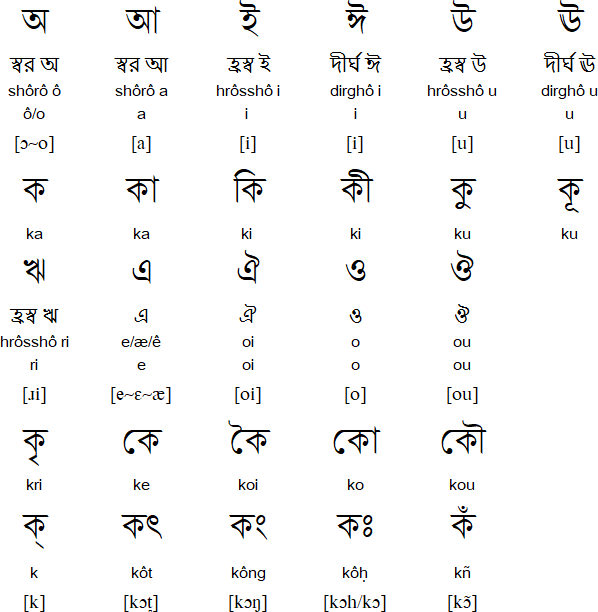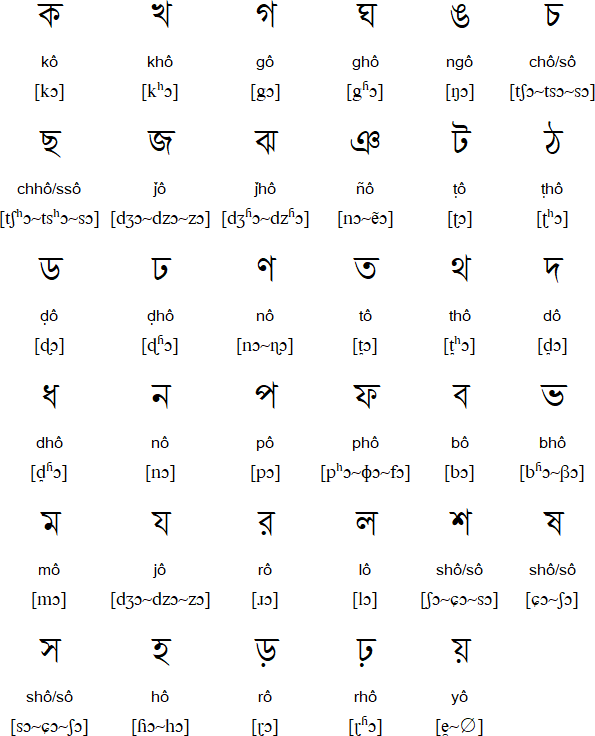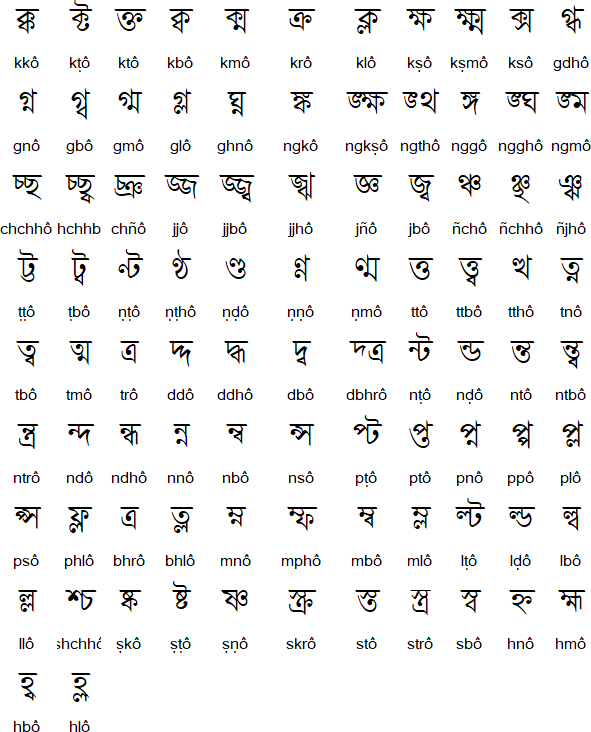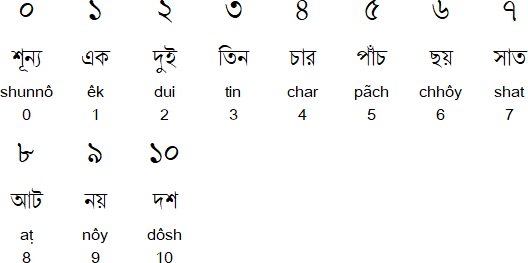Origin
The Bengali alphabet is derived from the Brahmi alphabet. It is also closely related to the Devanagari alphabet, from which it started to diverge in the 11th Century AD. The current printed form of Bengali alphabet first appeared in 1778 when Charles Wilkins developed printing in Bengali. A few archaic letters were modernised during the 19th century.Bengali has two literary styles: one is called Sadhubhasa (elegant language) and the other Chaltibhasa (current language). The former is the traditional literary style based on Middle Bengali of the sixteenth century, while the later is a 20th century creation and is based on the speech of educated people in Calcutta. The differences between the two styles are not huge and involve mainly forms of pronouns and verb conjugations.
Some people prefer to call this alphabet the Eastern Nagari script or Eastern Neo-Brahmic script
Notable features
- The Bengali alphabet is a syllabic alphabet in which consonants all have an inherent vowel which has two different pronunciations, the choice of which is not always easy to determine and which is sometimes not pronounced at all.
- Vowels can be written as independent letters, or by using a variety of diacritical marks which are written above, below, before or after the consonant they belong to.
- When consonants occur together in clusters, special conjunct letters are used. The letters for the consonants other than the final one in the group are reduced. The inherent vowel only applies to the final consonant.
Used to write:
Bengali, an eastern Indo-Aryan language with around 211 million speakers in Bangladesh, the Indian state of West Bengal and also in Malawi, Nepal, Saudi Arabia, Singapore, Australia, the UAE, UK and USA.Assamese, an eastern Indo-Aryan language spoken by about 15 million people in the Indian states of Assam, Meghalaya and Arunachal Pradesh, and also spoken in Bangladesh and Bhutan.
Manipuri, one of the official languages of the Indian state of Manipur in north-east India and has about 1.1 million speakers. It is a member of the Sino-Tibetan language family, and also has its own alphabet
Garo, a Tibeto-Burman language spoken by about 800,000 people in the Indian states of Meghalaya and Assam, and also in Bangladesh.
Mundari, a Munda language with about two million speakers in eastern India, mainly in the Indian state of Bihar, also in Bangladesh and Nepal. It has been written with the Devanagari, Bengali, Oriya and Latin alphabets.
Vowels and vowel diacritics

More consonant-vowel combinations
Consonants

A selection of conjunct consonants

All conjunct consonants
Modifier symbols

Numerals

Download a spreadsheet with these charts (Excel format, 80K)
Sample text in Bengali

0 comments:
Post a Comment